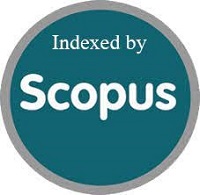Uji Validitas Konstruk dengan CFA dan Pelaporannya
DOI:
https://doi.org/10.15408/jp3i.v9i2.16964Keywords:
construct validity, confirmatory factor analysis, reporting a researchAbstract
Confirmatory Factor Analysis (CFA) is the most reliable method of construct validity analysis in the fields of psychology, education and social sciences. From the author's observations on research articles as well as bachelor and graduate theses, and dissertations using CFA, it was found that there are a lot of misunderstandings and incompleteness in reporting CFA analysis. This paper is intended as an effort to improve this situation and provide recommendations in reporting data analysis using CFA. At the very least, this article is to show the important things that must be considered in understanding and using CFA and test theory in general.References
Bentler, P. M. (1995). EQS – Structural equations program manual. Multivariate Softwares. Encino. CA.
Cattell, R. B. (1978). The scientific use of factor analysis in behavioral and life sciences. Plenum Press. New york.
Comrey, A. L. (1973). A first course in factor analysis. Academic Press. New York.
Guilford, J.P. (1952). When not to factor analyze. Psychological Bulletin, 49, 26 – 37.
Jackson, D.L., Gillaspy,Jr., J. A., and Stephenson, R. P. (2009). Reporting practices in confirmatory factor analysis: an overview and some recommendations. Psychological Methods, Vol. 14, No. 1, 6 –23
Joreskog, K. G. (1968). New methods in maximum likelihood factor analysis. British Journal of Mathematical and Statistical Psychology, 21, 86 – 96.
Joreskog, K. G., (1969). A general approach to confirmatory maximum likelihood factor analysis. Psychometrika, 34, 183 – 202.
Joreskog, K. G. And Sorbom, D. (1981). LISREL IV. Linear structural relatioship by the method of maximum likehood. a user guide. Scientific Softwares International. Chicago.
Joreskog, K. G. And Sorbom, D. (1993). LISREL 8: Structural equations modeling with the simplis command language. Scientific Softwares International. Chicago.
Joreskog, K. G., Olsson, U. H. And Wallentin, F. Y. (2016). Multivariate analysis with LISREL. Springer. Switzerland.
Lawley, D.N. and Maxwell, A. E. (1971). Factor analysis as a statistical method. 2nd ed. Butterworth. London.
Lord, F.M. and Novick, M. R. (1968). Statistical theories of mental test scores. Addison-Wesley. New York.
McDonald, R.P., and Ho, M. R. (2002), Principles and practice in reporting structural equation analyses. Psychological Methods,. Vol. 7, No. 1, 64–82.
Muthén, L.K. and Muthén, B.O. (1998-2017). Mplus user’s guide. Eighth Edition. Los Angeles, CA: Muthén & Muthén
Pedhazur, E. J. (1997). Multiple regression in behavioral research. 3rd Ed. Wadsworth Thomson Learning. New York.
Schreiber, J. B., Nora, A., Stage, F.K., Barlow, E.A., King, J.( 2006) Reporting structural equation modeling and confirmatory factor analysis results: a review, The Journal of Educational Research , Jul. - Aug., 2006, Vol. 99, No. 6 (Jul. - Aug., 2006), pp. 323-337
Spearman, C. (1904). General intelligence: Objectively determined and measured. American Journal of Psychology, 5, 201 – 293.
Thurstone, L.L. (1947). Multiple factor analysis. University of Chicago Press. Chicago.



